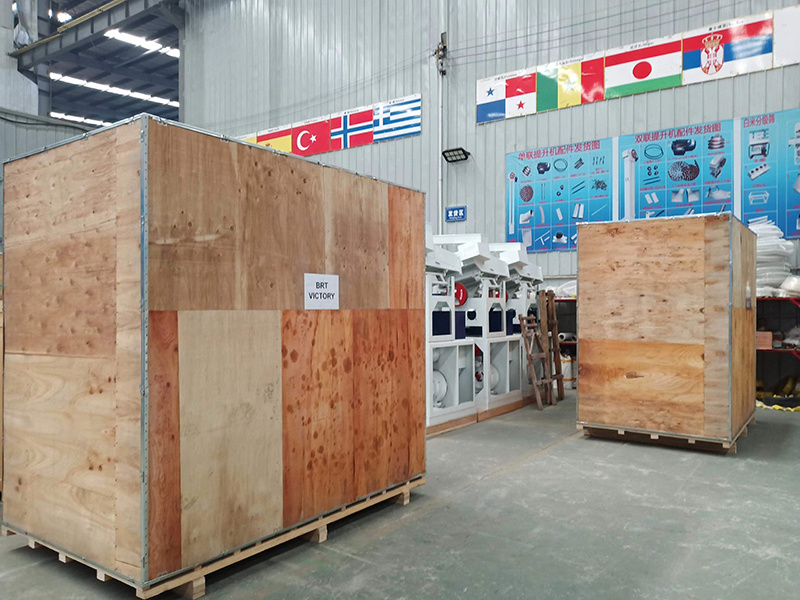Display of packaging cabinet
A display of packaging cabinet typically refers to a type of display unit or storage cabinet designed specifically to hold, showcase, or organize packaging materials (such as boxes, bags, labels, or other packing supplies) in a retail or production environment. It can also refer to a cabinet used to display packaged products in stores or showrooms. These cabinets are often used in industries such as food, cosmetics, electronics, and manufacturing, where organized and visually appealing presentation of products or packaging materials is important. Key Characteristics and Uses of a Display Packaging Cabinet: Packaging Material Display: These cabinets are used to store and showcase various packaging materials such as boxes, cartons, bags, labels, tapes, and other packaging supplies. In this context, the purpose of the display cabinet is to keep these materials organized and accessible for use in packaging operations. Such cabinets can be found in warehouses, factories, or retail settings where the organization of packaging materials is crucial for efficient operations. Product Display Cabinet: A display packaging cabinet can also refer to a unit used to display finished packaged products in retail stores, showrooms, or exhibitions. For example, a cosmetics brand might use a display cabinet to showcase its products in a clean and attractive manner. This kind of display cabinet often features transparent glass or acrylic panels to allow customers to view the packaged goods clearly. It can be used to highlight premium or featured products with a focus on making the packaging look appealing and the products easy to access. Design and Aesthetics: Display packaging cabinets are often designed with visual appeal in mind. This is especially important for products that rely on packaging design as a key element of marketing. For instance, luxury goods or special edition products might be placed in elegant display cabinets to enhance their perceived value. The design can vary from simple wooden or metal cabinets to more sophisticated units with adjustable shelves, lighting, and glass doors for enhanced visibility and protection. Types of Display Cabinets: Open Shelving: These display cabinets feature open shelves where packaging materials or products are placed for easy access and display. They are often used in warehouses or shops to show off various types of packing materials in an organized manner. Glass Display Cabinets: These are often used in retail and showroom settings, where transparency and visibility are key. Glass shelves or glass-fronted display cabinets allow customers to clearly see the packaged items while keeping the products protected. Drawer Storage Cabinets: For organizing packaging supplies like boxes, bags, and packing peanuts, cabinets with pull-out drawers or compartments can be used to keep various types of packaging materials neatly stored. Modular Display Units: These are flexible and adjustable display cabinets that can be customized in terms of size, shelving arrangement, and lighting. They are often used in stores where different types of products or packaging materials need to be displayed. Functional Features: Shelving: Adjustable or fixed shelves help in organizing packaging materials or products efficiently, allowing for easy retrieval and a neat presentation. Labeling: Some display packaging cabinets have areas for labeling the contents of each shelf or drawer to make it easier for users to identify different types of packaging materials or products at a glance. Lighting: For retail use, some cabinets may include built-in lighting (e.g., LED lights) to highlight the products or packaging materials and make the display more attractive and eye-catching. Durability: Display packaging cabinets are built to be durable and often constructed from materials such as metal, wood, or sturdy plastic to withstand the weight of packaging materials or products over time. Retail Display: In retail environments, a display cabinet is often used to showcase packaged products that are for sale. These cabinets serve not only as a means to store products but also to promote product visibility and encourage customer engagement. For example, in a high-end store or pharmacy, a display cabinet can be used to present packaged cosmetics, electronic gadgets, or luxury items with a focus on showcasing the packaging design and overall product appeal. Warehouse and Storage Function: In warehouses or factories, display packaging cabinets are also used to organize packaging supplies in an orderly manner. This can help workers quickly locate and access materials required for packing products for shipment. Such cabinets may include areas for bulk storage, smaller compartments for fragile or specialty items, and dedicated sections for labeling, sealing, and boxing materials.
Classification:
Detailed introduction
A display of packaging cabinet typically refers to a type of display unit or storage cabinet designed specifically to hold, showcase, or organize packaging materials (such as boxes, bags, labels, or other packing supplies) in a retail or production environment. It can also refer to a cabinet used to display packaged products in stores or showrooms. These cabinets are often used in industries such as food, cosmetics, electronics, and manufacturing, where organized and visually appealing presentation of products or packaging materials is important.
Key Characteristics and Uses of a Display Packaging Cabinet:
-
Packaging Material Display:
- These cabinets are used to store and showcase various packaging materials such as boxes, cartons, bags, labels, tapes, and other packaging supplies. In this context, the purpose of the display cabinet is to keep these materials organized and accessible for use in packaging operations.
- Such cabinets can be found in warehouses, factories, or retail settings where the organization of packaging materials is crucial for efficient operations.
-
Product Display Cabinet:
- A display packaging cabinet can also refer to a unit used to display finished packaged products in retail stores, showrooms, or exhibitions. For example, a cosmetics brand might use a display cabinet to showcase its products in a clean and attractive manner. This kind of display cabinet often features transparent glass or acrylic panels to allow customers to view the packaged goods clearly.
- It can be used to highlight premium or featured products with a focus on making the packaging look appealing and the products easy to access.
-
Design and Aesthetics:
- Display packaging cabinets are often designed with visual appeal in mind. This is especially important for products that rely on packaging design as a key element of marketing. For instance, luxury goods or special edition products might be placed in elegant display cabinets to enhance their perceived value.
- The design can vary from simple wooden or metal cabinets to more sophisticated units with adjustable shelves, lighting, and glass doors for enhanced visibility and protection.
-
Types of Display Cabinets:
- Open Shelving: These display cabinets feature open shelves where packaging materials or products are placed for easy access and display. They are often used in warehouses or shops to show off various types of packing materials in an organized manner.
- Glass Display Cabinets: These are often used in retail and showroom settings, where transparency and visibility are key. Glass shelves or glass-fronted display cabinets allow customers to clearly see the packaged items while keeping the products protected.
- Drawer Storage Cabinets: For organizing packaging supplies like boxes, bags, and packing peanuts, cabinets with pull-out drawers or compartments can be used to keep various types of packaging materials neatly stored.
- Modular Display Units: These are flexible and adjustable display cabinets that can be customized in terms of size, shelving arrangement, and lighting. They are often used in stores where different types of products or packaging materials need to be displayed.
-
Functional Features:
- Shelving: Adjustable or fixed shelves help in organizing packaging materials or products efficiently, allowing for easy retrieval and a neat presentation.
- Labeling: Some display packaging cabinets have areas for labeling the contents of each shelf or drawer to make it easier for users to identify different types of packaging materials or products at a glance.
- Lighting: For retail use, some cabinets may include built-in lighting (e.g., LED lights) to highlight the products or packaging materials and make the display more attractive and eye-catching.
- Durability: Display packaging cabinets are built to be durable and often constructed from materials such as metal, wood, or sturdy plastic to withstand the weight of packaging materials or products over time.
-
Retail Display:
- In retail environments, a display cabinet is often used to showcase packaged products that are for sale. These cabinets serve not only as a means to store products but also to promote product visibility and encourage customer engagement.
- For example, in a high-end store or pharmacy, a display cabinet can be used to present packaged cosmetics, electronic gadgets, or luxury items with a focus on showcasing the packaging design and overall product appeal.
-
Warehouse and Storage Function:
- In warehouses or factories, display packaging cabinets are also used to organize packaging supplies in an orderly manner. This can help workers quickly locate and access materials required for packing products for shipment. Such cabinets may include areas for bulk storage, smaller compartments for fragile or specialty items, and dedicated sections for labeling, sealing, and boxing materials.
Previous:

 Language
Language



